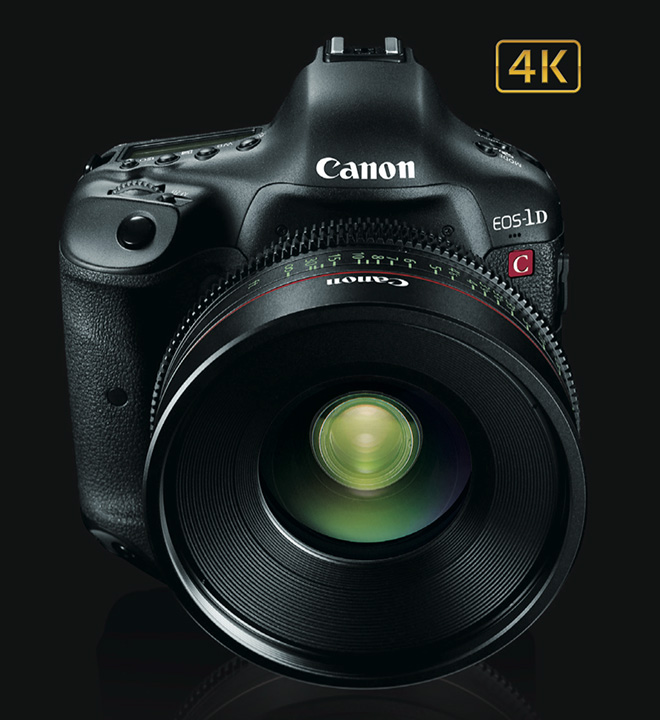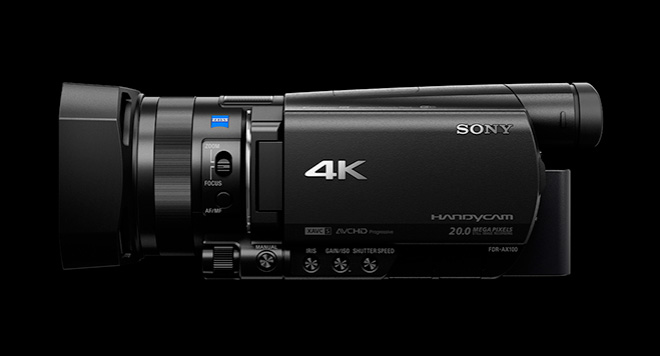
This blog has been going 4 years now and to be honest I have run out of interesting things to say about the current DSLRs. It’s time to upgrade.
2014 will be a big overhaul for image quality on DSLRs. Even those who don’t need the extra resolution 4K offers will change their minds when they see what’s coming.
You see, 4K isn’t really about resolution at all… It is the catalyst for a massive leap in overall image quality, especially on consumer cameras.
Resolution is just one aspect that makes a good image.
Until now sensors doing video in DSLRs have been forced to dump huge amounts of data that goes into describing the image they capture for stills.
The one exception was the Canon 1D C which took pretty much a 1:1 crop of the full sensor, reading out every pixel over an APS-H sized area of the full frame sensor for a 4K image. This camera, being at such an early stage of the 4K hardware curve, didn’t really have the processing power to compress or store that amount of data very elegantly, so it was stuffed into an inefficient MJPEG codec in 8bit.
But what I noticed immediately with the 1D C was that the beautiful image it made in 4K mode, was not as much to do with resolution as to do with allowing that sensor off a leash.
The 1D C did its very best given hardware barely changed from the 1D X stills camera to cram as much of that goodness onto a CF card as possible.
There was no weird cartoon-like colour, very little moire and aliasing, nice smooth tonality and gradation (unless you pushed the codec around in post!)
It was just horrible to use because of the stills form factor and had no concessions really to filmmakers aside from that amazing 4K output.
[vimeo]http://vimeo.com/64879501[/vimeo]Think of 4K as quadrants of 1080p. Four 1080p images make one 4K image. That’s a big difference. 1080p is just 2 megapixels worth of image data. On a DSLR those pixels aren’t going to be of great quality because a lot of the neighbouring ones have been thrown in the bin by the sensor. If you think of a ‘super pixel’ or a big chunk of the frame – now throw away three quarters of it. Doesn’t look so good does it?
That downscaling of a high resolution 4K, 5K or even 7K sensor to just under 2K is a thing of the past. Think about the difference in smart phone photos between the early 2MP captures in 2002 and the latter day 8MP of the iPhone in 2013. That’s a similar difference in the amount of image data which will hit us between the end of the 1080p era and the start of the 4K one, in just a space of a couple of months rather than 10 years.
4K doesn’t just benefit resolution and you won’t need a 4K display to benefit from more of that sensor data reaching the memory card. 4K means more dynamic range, more realistic shadows and highlights, more subtle gradation, less moire and aliasing, better 1080p and yeah, more detail too, because more of the sensor data survives.
Sure there are ways camera manufacturers can mess it up. Too much compression, low bitrates, poor codecs and a bad debayer can all hurt the image just as much as before. But the chances are, they won’t. Look at how far codecs have come in DSLRs and mirrorless cameras since 4 years ago. We started off with 17Mbit AVCHD on the GH1 and not even 24p on the original 5D Mark II firmware. We ended up with 220Mbit 10bit ProRes 422 on the Blackmagic Pocket Cinema Camera, 72Mbit ALL-I and 1080/60p on the GH3 and amazing raw video on the Canon 5D Mark III. The codec is no longer a weak area. The image processor’s inability to provide us with the full sensor readout was the Achilles heel all this time.
Finally line skipping, moire and aliasing is going to die out. No more horrible electronic jaggedness and weirdness. 4K will not eliminate it altogether (the Blackmagic Production Camera does have some aliasing) but it will vastly reduce it and it will make 1080p look much cleaner. Rough edges and flaws at the 1:1 pixel level have a tendency to soften out when you’re producing 1080p oversampled from 4K.
It’s true that many don’t need more resolution than 1080p and that’s just fine. Oversampled 1080p like on the Canon C300 is lovely and now we will be getting it for $2k and less, on consumer cameras.
Slow mo
Those powerful processors also make 1080p at 120fps and above possible. I love slow-mo and to have wider bandwidth between the sensor and your card, is not just going to be gobbled up by resolution, it will allow higher frame rates too.
Not every manufacturer will see fit to implement it and it does need support on the sensor too, but the trend is definitely towards 120fps becoming commonplace and 240fps hopefully coming to more cameras at lower prices than the Sony FS700.
RIP 1080p
Atomos, makes of the Ninja external recorder, say over 20 new 4K cameras are coming before NAB in April 2014.
4K has forced manufacturers to put much more advanced image pipelines in consumer cameras. TV sales depend on it. Already Sony has a consumer camera with a 4K sensor in it (the RX10 – my review here) but not the ability to process and compress 4K video yet.
That will change next month with the release of their 1″ sensor 4K prosumer camcorder – same sensor – much beefier processors and cutting edge codec. The sensor in the AX100e is a 2.7x crop over full frame. It’s very big by camcorder standards and the 20MP stills are APS-C DSLR quality in terms of detail, dynamic range and even low light performance up to around ISO 3200, though sadly Sony chose a rather slow lens for the camcorder at F2.8 to F4.

I can guarantee that you will get better colour and more dynamic range with this camera over the RX10, even if you downscale the 4K to 1080p and play it back on Vimeo.
Panasonic seem to be doing something similar, but their offering is a LOT more compelling than a camcorder. They have a sensor already capable of 4K video in the GX7 and GM1. The same sensor is offered by Panasonic’s semiconductors division as an off the shelf part with 4K video in the specs. I am pretty sure this is the Micro Four Thirds sensor we’ll be seeing in the 4K shooting GH4, a promotional model of which was shown under glass at CES recently, confirming the rumours.
So finally the processing power has caught up with the sensor technology. As we know from our DSLR stills, those sensors are capable of playing with the very best in cinema cameras.
All they have to do is do that at 24fps.
Moore’s Law is about to make that possible… so long live the DSLR!


